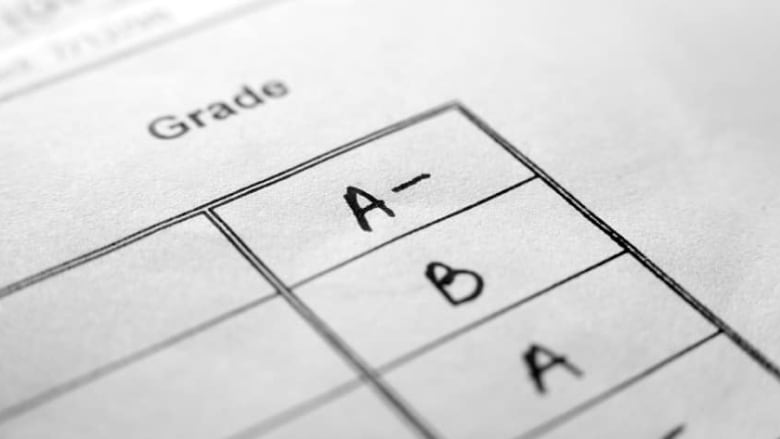When your 'A' becomes a 'C' Ontario university downgrades marks from some high schools
Students from Grimsby Secondary School saw their marks downgraded by 27.1 per cent


At the University of Waterloo's engineering program, sometimes an"A" on a high school transcript isn't really an "A."
The university downgrades marks from schools where students historically have performed poorly in thefirst year of their program. So, an "A" from the wrong high school might not be better than a "C" from the right one.
There are 74high schools from across the province on Waterloo's list. Two Hamilton-area schools are near the bottom. Students from Grimsby Secondary School saw their marks downgraded by 27.1 per cent, the most in the province while students fromSouthern Ontario Collegiate, saw their marks drop by25.9per cent, third worst on the list.
Bill Tucker, an assistant professor of education at Western University and a former school superintendent,spoke with the CBC'sConrad Collacoabout this practice and what teachers, parents and students need to do to make sure high schoolers are ready for university.
You can read an abridged and edited version of the interviewor listen to the full audio interview by hitting the play button above.

Tell me about grade inflation. What is it?
Well, the thinking behind grade inflation is the artificial increase in marks or grades that would allow students to be more successful in the application process to either post secondary institutions or scholarships.
How often does this happen at schools in Ontario?
Well, I was involved in public education for about 35 years. I taught high school science, supervised secondary school principals, I visited hundreds of different secondary school classes and talked to the teachers and I have not come across the artificial inflation of grades to the extent that has been alluded to in the past few days. Now, as a teacher did I change marks from 79 to 80? Yeah, I did that. But I wouldn't categorize that as grade inflation.
So what do you think accounts for this bump that we appear to be seeing based on the information gathered by the University of Waterloo?
This is not a new situation. Our own children, 15 and 20 years ago, went through this, and I would suggest that most first year students experience some kind of grade drop. It's a huge shift in paradigm, it's a completely different learning environment. Students are going from a home environment to living with other students in a residence or sharing apartments.
You might have a student who is very capable of achieving A level grades but if their study habits aren't up to the level expected at university or college, in secondary school you had guidance counselors, school administrators or the classroom teacher would give you a call or talk to you in the hallway and tell you to buckle down and pull your socks up. At university or college if you decide to skip classes or not submit an assignment you don't have that support. You're on your own.
At university or college if you decide to skip classes or not submit an assignment, you don't have that support. You're on your own.- Bill Tucker,assistant professor of education at Western University
Why are we seeing such a disparity in some schools like the ones in Grimsby and Hamilton?
What should parents and students be doing to prepare for that first year transition to university?
I think it's a three-way responsibility. Definitely schools have to do something in terms of opening doors of communication. Parents and guardians can talk to secondary school teachers and ask about how their kids are doing in terms of attendance, assignments and study habits. Students could take advantage of the amazing job colleges and universities are now doing at providing transitioning and orientation activities. Go to those orientations. Many colleges and universities provide practice classes in the summertime where students can go and talk to post secondary instructors to find out what the expectations are. I think all of these would benefit students.
Does it help that this list is now public?
I support any type of transparency. I think it opens the door for the conversations that need to occur in secondary and post-secondary school institutions, and between the two of them together.












_(720p).jpg)


 OFFICIAL HD MUSIC VIDEO.jpg)
.jpg)



























































































